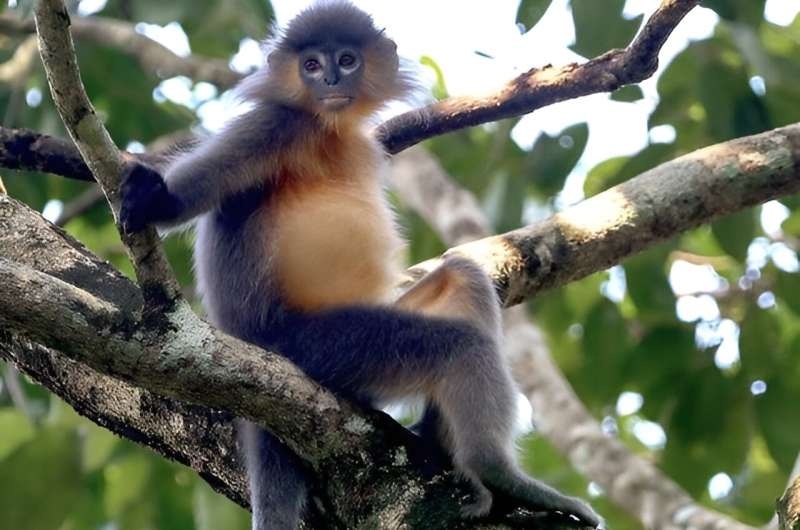A new study reveals a concerning development for two endangered primate species in Bangladesh – Phayre’s langurs and capped langurs. Due to habitat loss, these species are being forced to interbreed, putting their future at risk.

Hybridization Threatens Survival
The research, published in the International Journal of Primatology, reveals that genetic confirmation of hybrids have been observed in mixed groups of Phayre’s and capped langurs. This is worrisome because if such hybridization persists it could eventually wipe out one or both species.
In northeastern Bangladesh, an international research team monitored the langur populations over five years. They also discovered that 8 of the 98 langur groups contained Phayre’s and capped langurs, and in three groups, some individuals appeared to be hybrids. One confirmed hybridization occurred between a capped langur mother and Phayre’s langur father based on genetic analysis. Moreover, a male individual of hybrid appearance showed parental behavior while two other female hybrids had already reproduction-capable live offspring and were thus fertile.
The Culprit: Human Activities
Primates do not usually hybridize but, where the distribution ranges of related species overlap, it can happen. Between deforestation, habitat fragmentation (breaking up wild jungle land to build cities or put in palm oil plantations), hunting, and trapping of primates by the Bangladeshi humans, there are many factors likely to be negatively impacting the langur community.
Destroying habitats and razing forests turns out to be a double blow when it comes to langur populations: not only are their numbers decimated, but individuals have fewer opportunities to travel amongst local populations. This has resulted in hybridization between the two species. The team point out that this is not merely a local issue, but representative of the broader challenge facing wildlife globally — when habitats are damaged or destroyed animals from different species mix in ways never intended by evolution, and interbreeding can then occur, leading ultimately to the loss of one or both populations.
Conclusion
Phayre’s and capped langurs are now on the brink of extinction in Bangladesh. Less than 500 player langurs and around 600 capped langurs are left in the northeastern region, a condition that necessitates an immediate rescue operation for them as both species of these primates are in endangered status. We could term forest protection a national objective and provide dispersal corridors between the ravaged forests to allow langurs to stalk freely, thus keeping their genetic diversity in check. This also underscores the necessity for novel research concerning the range of hybridization and the establishment of long-term conservation strategies. However, time is running out and the ultimate preservation of these special primates relies on all our efforts to conserve their forests, and to stop the evidence of hybridization.
